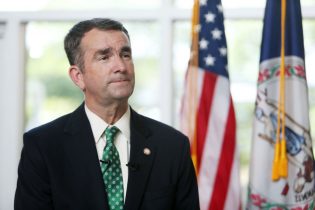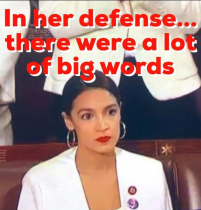(In the first article on the New Green Deal, we looked at what it generally encompassed. Now we look at how it is to be funded.)
The demand for the Green Deal keeps growing. Over forty Progressive Democrats have announced their support the Green New Deal. Several announced Democrat Presidential Candidates have also indicated their support for the program.
The Green New Deal is only in the “draft legislation” phase. At this time, there is no ability to determine what the costs of the program would be. But some estimates have been made.
Chris Clark, a physicist with experience studying the “deployment of renewable products” has estimated that the cost of building out the electric generating capacity alone (whatever method would be used) would cost at least $2 trillion. Other estimates for the full program run as high as $7 trillion. Of course, we all know that government run programs NEVER come in on budget. So $10 - $15 trillion would not be a surprise at all.
How would the Green New Deal be paid for? From the Draft Proposal found here:
How will the government pay for these investments?
- Many will say, “Massive government investment! How in the world can we pay for this?” The answer is: in the same ways that we paid for the 2008 bank bailout and extended quantitative easing programs, the same ways we paid for World War II and many other wars. The Federal Reserve can extend credit to power these projects and investments, new public banks can be created (as in WWII) to extend credit and a combination of various taxation tools (including taxes on carbon and other emissions and progressive wealth taxes) can be employed.
- In addition to traditional debt tools, there is also a space for the government to take an equity role in projects, as several government and government-affiliated institutions already do.
The methodology proposed for paying for the Green New Deal is interesting at the very least. Let’s take a look at what is proposed.
Primary responsibility for funding of the programs appears to fall within the purview of the Federal Reserve, a private entity which is heavily influenced by the government. The Fed will use the same programs to fund the plan as it did during the Bank and Housing Crisis.
The Fed used TARP (Troubled Asset Relief Program) initially to address the Bank Crisis in 2008. $700 million was “allocated” by the government so that the Fed could buy the “troubled” assets (mortgage backed securities and bad mortgage loans) from the banks.
In addition to TARP, the Fed also used Quantitative Easing (QE) as a monetary policy to pump money into the economy. The Fed bought “pre-determined” amounts of government bonds and other financial instruments held by banks, and credited an individual bank’s Fed reserve accounts so that banks could begin lending again. In essence, the Fed actions allowed banks to create new money to put into the economy.
For the Green New Deal, it is ambiguous as to whether the Fed would be lending directly to companies involved in the Green New Deal, or going through banks. But the mention of Public Banks provides a clue as to what would be happening.
What is a Public Bank? It is a bank purportedly owned “by the people and for the people.” In reality, the banks are owned by the cities, states and in this case, the federal government. The loans that the bank makes are designed to benefit the community or region where it is located, and to reflect the “values” of the community.
The money held by the public bank comes from the taxes and other income received by the government controlling the bank. The money is loaned out to fund the “pet projects” that the government wants to push forward.
For the New Green Deal, the Fed and the government would create a public bank or banks, and then fund them through taxes on the people, through new bond issuances from the Treasury, and through a form of TARP or Quantitative Easing. The money would then be lent to companies that would participate in the New Green Deal.
Professional bankers would be hired to oversee the operations of a public bank, and not politicians. By having pros operate the bank, it is hoped that there will be no interference in bank lending from politicians. But, this is the Federal Government we are talking about. So there will be interference and pressure from politicians to provide loans to companies with political connections. Expect many failed companies like Solyndra.
Alexandria Ocasio Cortez has also stated that the New Green Deal would also be funded through taxes. She has specifically mentioned a progressive tax of 60% to 70% on the wealthy. Others have mentioned up to 90%. And then, there are carbon taxes thrown into the mix.
Another idea floated for funding of the New Green Deal involves the government providing funding for companies and then taking an “equity” or “financial” position in the company.
Whenever there is government involvement in the funding of any projects, you can bet there will be cost overruns, fraud or payoffs present.
Remember Obamacare? That was a power grab by the government to control 1/6th of the economy of the US. And has been said…………”who controls the medical system, controls the people.”
The New Green Deal is another attempt to grab control of a vast portion of the economy. Only this time, it is even larger because everyone and every business is affected by energy. Whether it is the use of gas and fuel or electricity or the purchase of food, clothing or a thousand different items, the products will involve the use of energy to create it, or ship it, or consume it.
If the government can take control of the energy sector, then it has complete and final control over America.
Next, we will look at the effects of the New Green Deal on various sectors of the economy and people
This post was created with our nice and easy submission form. Create your post!



Loading…